
Soufrière: A Tropical Paradise in Dominica
Discover Soufrière, Dominica: A tranquil fishing village with hot springs, marine reserves, and a rich cultural heritage. Perfect for nature lovers and adventure seekers.
Nestled along the southwestern coast of Dominica, Soufrière is a hidden gem that offers a perfect blend of natural beauty, cultural richness, and adventure. This quaint fishing village is surrounded by lush green hills and pristine waters, making it an ideal destination for nature lovers and outdoor enthusiasts. Soufrière is renowned for its hot springs, which are a result of the island's volcanic activity. Visitors can immerse themselves in the therapeutic waters of the Soufrière Sulphur Springs or hike up to the Boiling Lake, one of the largest hot springs in the world. The area is also home to the Soufrière Scotts Head Marine Reserve, a protected underwater environment teeming with vibrant coral reefs and diverse marine life. In addition to its natural attractions, Soufrière boasts a rich cultural heritage. The village is dotted with charming Creole-style houses and historic sites, such as the Catholic Church of St. Mark. Local markets and eateries offer a taste of Dominican cuisine, featuring fresh seafood and tropical fruits. Whether you're seeking relaxation or adventure, Soufrière provides a tranquil yet exciting escape from the hustle and bustle of everyday life.
Local tips in Soufrière
- Visit the Soufrière Sulphur Springs early in the morning to avoid crowds and enjoy the serene surroundings.
- Bring sturdy hiking shoes if you plan to trek up to the Boiling Lake; the trail can be challenging.
- Snorkeling in the Soufrière Scotts Head Marine Reserve is a must; the waters are clear and full of marine life.
- Try the local seafood dishes at village eateries for a taste of authentic Dominican cuisine.
- Respect local customs and dress modestly, especially when visiting religious sites like the Catholic Church of St. Mark.
Soufrière: A Tropical Paradise in Dominica
Nestled along the southwestern coast of Dominica, Soufrière is a hidden gem that offers a perfect blend of natural beauty, cultural richness, and adventure. This quaint fishing village is surrounded by lush green hills and pristine waters, making it an ideal destination for nature lovers and outdoor enthusiasts. Soufrière is renowned for its hot springs, which are a result of the island's volcanic activity. Visitors can immerse themselves in the therapeutic waters of the Soufrière Sulphur Springs or hike up to the Boiling Lake, one of the largest hot springs in the world. The area is also home to the Soufrière Scotts Head Marine Reserve, a protected underwater environment teeming with vibrant coral reefs and diverse marine life. In addition to its natural attractions, Soufrière boasts a rich cultural heritage. The village is dotted with charming Creole-style houses and historic sites, such as the Catholic Church of St. Mark. Local markets and eateries offer a taste of Dominican cuisine, featuring fresh seafood and tropical fruits. Whether you're seeking relaxation or adventure, Soufrière provides a tranquil yet exciting escape from the hustle and bustle of everyday life.
When is the best time to go to Soufrière?
Iconic landmarks you can’t miss
Trafalgar Falls
Experience the breathtaking beauty of Trafalgar Falls, Dominica's iconic twin waterfalls, surrounded by lush rainforest and rich biodiversity.
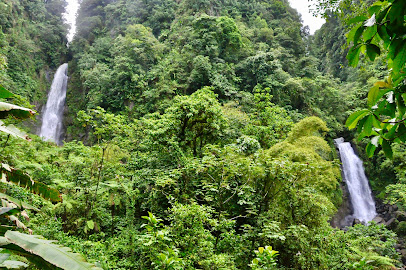
Jungle Bay Dominica
Escape to Jungle Bay Dominica, where luxury meets nature in a tranquil eco-friendly resort offering wellness and culinary delights.
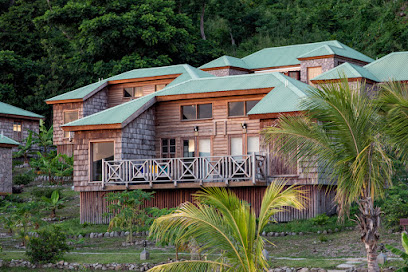
Ti Kwen Glo Cho
Discover the serenity of Ti Kwen Glo Cho, a tropical resort hotel in Wotten Waven, offering luxurious accommodations and revitalizing spa experiences.
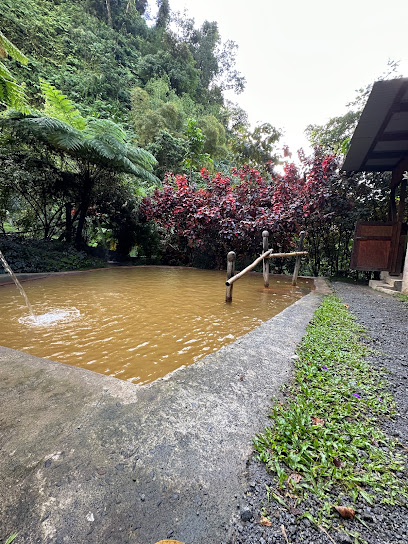
Champagne Reef, Dominica
Explore the breathtaking Champagne Reef in Dominica, where vibrant marine life meets spectacular volcanic bubbles for an unforgettable adventure.
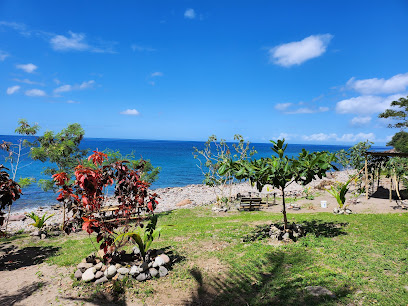
Cabrits National Park
Embark on an unforgettable journey through Cabrits National Park, where nature, history, and adventure converge in stunning Caribbean beauty.
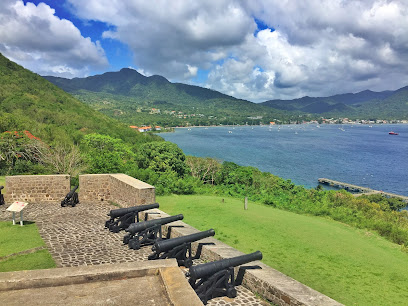
Chez Wen Cuisine
Discover the vibrant flavors of the Caribbean at Chez Wen Cuisine, a seafood restaurant in Scott's Head, Dominica, perfect for every seafood lover.
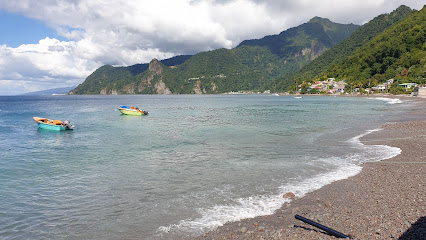
Fort Shirley
Discover the historic Fort Shirley in Portsmouth, a captivating site showcasing colonial architecture and stunning Caribbean views.
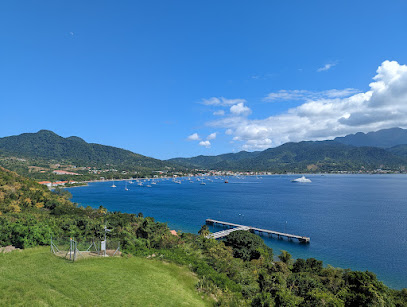
Kalinago Barana Aute
Explore the authentic Kalinago culture at Kalinago Barana Aute, where traditions come alive in the heart of Dominica's natural beauty.
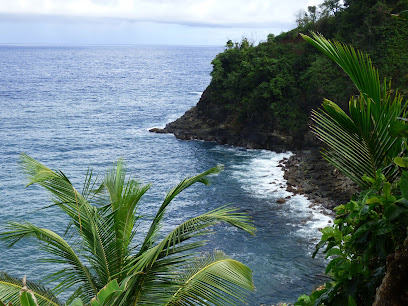
Lacou Melrose House
Experience the authentic flavors of Dominica at Lacou Melrose House, where culinary artistry meets warm hospitality in the heart of Roseau.
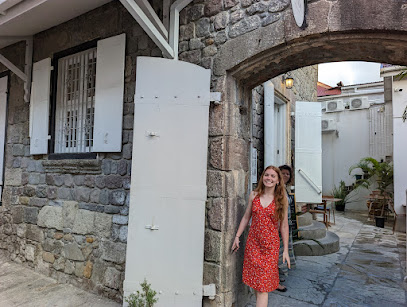
Morne Trois Pitons National Park
Explore the breathtaking landscapes and diverse ecosystems of Morne Trois Pitons National Park, a UNESCO World Heritage Site in Dominica.

Extreme Dominica - Canyon Experience
Experience breathtaking canyoning adventures with Extreme Dominica amidst stunning landscapes and waterfalls for the ultimate outdoor thrill in the Caribbean.
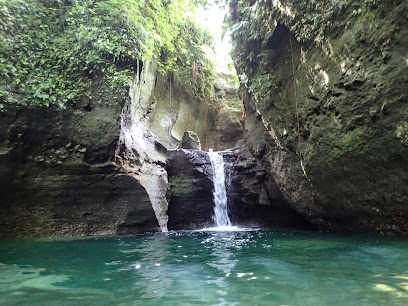
Bubble Beach Spa
Experience tranquility at Bubble Beach Spa in Soufriere, Dominica, where relaxation meets breathtaking ocean views in a serene beach pavilion.

Ruins Rock Café
Discover the vibrant flavors and relaxing ambiance of Ruins Rock Café, the perfect spot for coffee and cocktails in Roseau, Dominica.
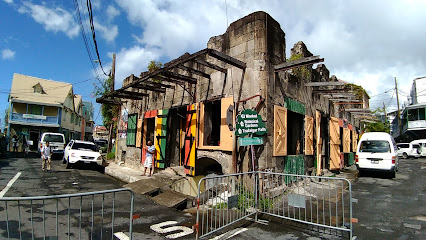
Nature Island Dive
Explore the vibrant underwater world of Dominica with Nature Island Dive, your premier dive shop in Soufriere, for unforgettable diving adventures.
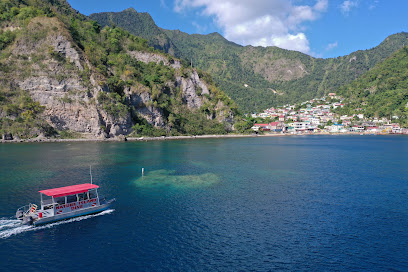
Papillote Tropical Gardens
Experience the lush beauty and tranquility of Papillote Tropical Gardens in Trafalgar, Dominica, a perfect escape into nature's embrace.
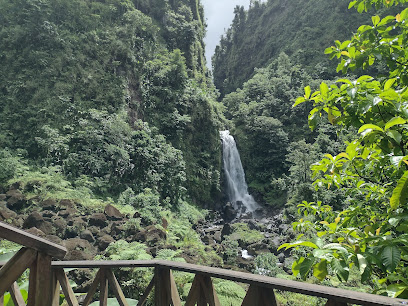
Unmissable attractions to see
Soufrière Drive In Volcano
Explore the only drive-in volcano in the Caribbean at Soufrière Drive In Volcano, a unique gem in St. Lucia's stunning landscape.
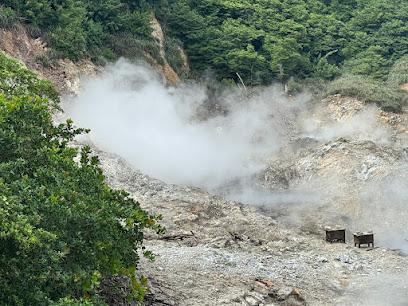
Rodney Bay Marina
Experience the charm of Rodney Bay Marina, a vibrant hub in St. Lucia offering stunning views, dining, shopping, and water adventures.
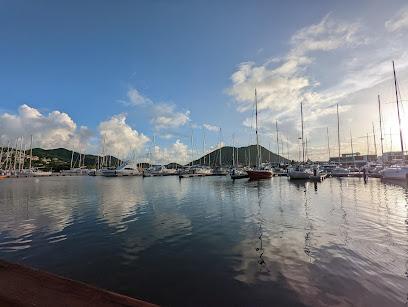
Diamond Falls Botanical Gardens & Mineral Baths
Explore the lush landscapes and rejuvenating mineral baths of Diamond Falls Botanical Gardens in beautiful Soufriere, St. Lucia.
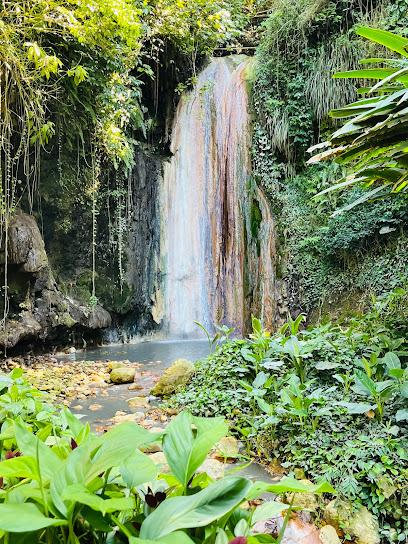
Daren Sammy Cricket Ground.
Discover the vibrant cricket culture of St. Lucia at the Daren Sammy Cricket Ground, a must-visit destination for sports enthusiasts.
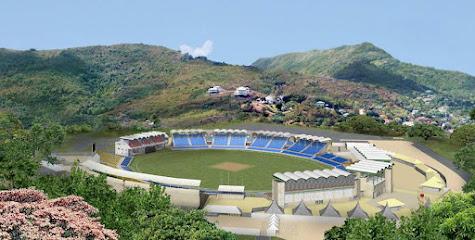
Toraille Waterfall Villas & ATV
Experience the natural beauty of Toraille Waterfall in Soufriere, St. Lucia, a breathtaking escape into nature's embrace.
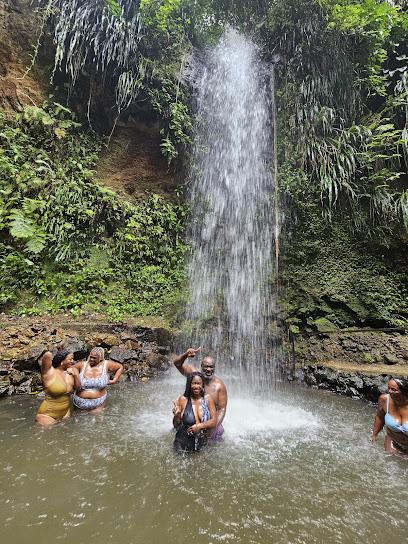
Saint Lucia National Trust
Explore the cultural heritage and natural beauty of Saint Lucia National Trust, a premier destination for history and nature enthusiasts.
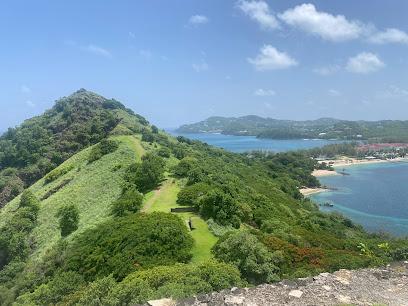
Têt Paul Nature Trail
Explore the Tête Paul Nature Trail at Chateau Belaire, a scenic wonder in St. Lucia, where nature enthusiasts can enjoy stunning views and rich biodiversity.

Ultra Lounge
Experience the vibrant atmosphere of Ultra Lounge in Rodney Bay, St. Lucia – where relaxation meets excitement in a tropical paradise.
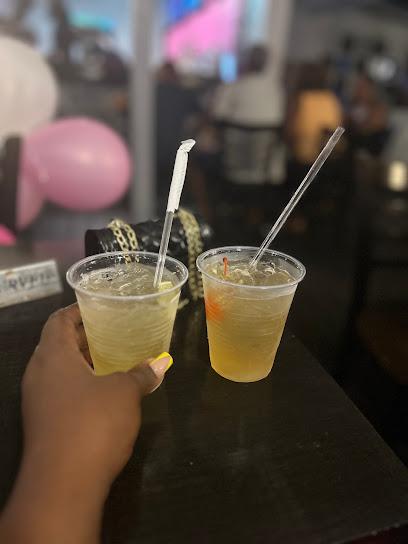
The Minor Basilica of the Immaculate Conception (Cathedral)
Explore the stunning Minor Basilica of the Immaculate Conception, a cultural and spiritual landmark in the heart of Castries, St. Lucia.
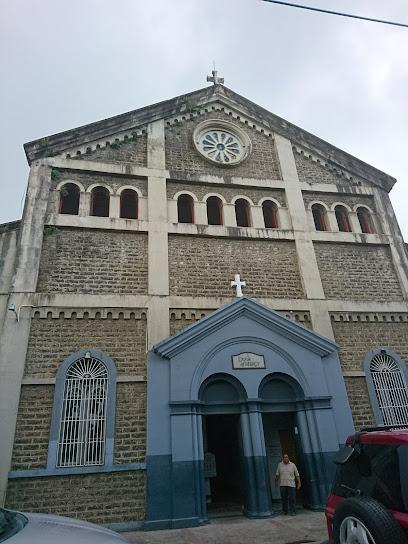
Morne Coubaril Historical Adventure Park
Explore the exciting blend of adventure, history, and stunning nature at Morne Coubaril Estate in St. Lucia, a top tourist attraction for every traveler.
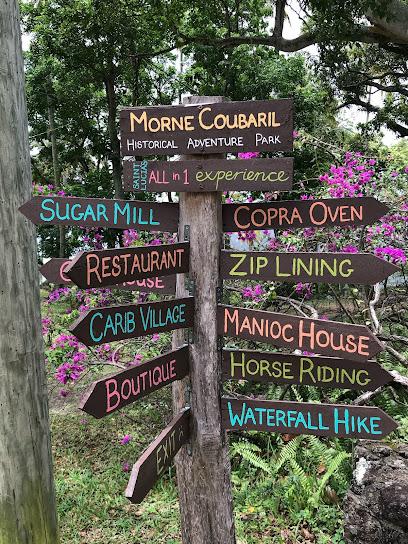
Treetop Adventure Park
Discover the exhilarating adventure of ziplining through the treetops at Treetop Adventure Park in Dennery, St. Lucia – a must-visit for thrill-seeking tourists.
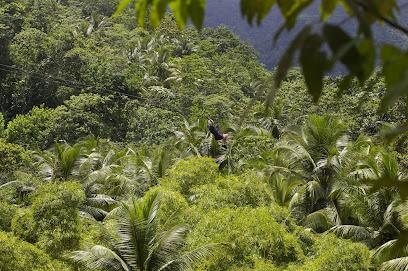
Piton Falls
Explore the stunning beauty of Piton Falls in St. Lucia, where lush landscapes and cascading waters create a tranquil escape for every traveler.
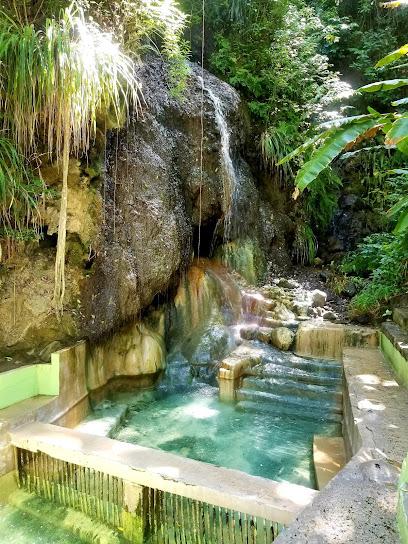
Rainforest Adventure
Discover the beauty of St. Lucia at Rainforest Adventure, where nature and adventure come together for an unforgettable experience.
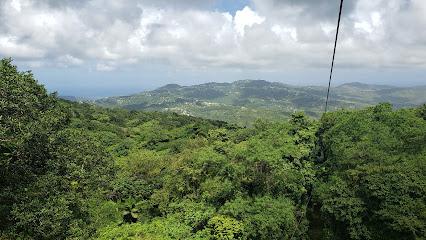
St. Lucia Distillers Ltd
Explore the heart of rum production at St. Lucia Distillers Ltd in Roseau, where the island's rich heritage and exceptional spirits come together.
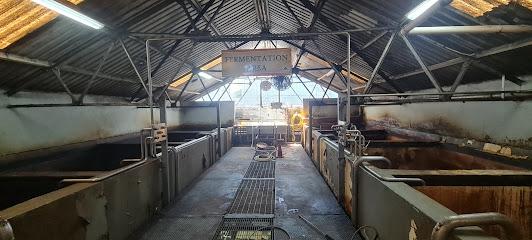
Fort Rodney
Explore the historic Fort Rodney on Pigeon Island in St. Lucia, where history meets breathtaking views and natural beauty.
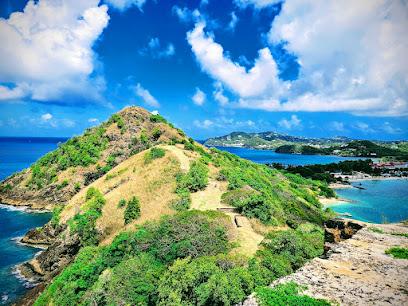
Essential places to dine
Jungle Bay Dominica
Immerse yourself in nature at Jungle Bay Dominica – an eco-friendly resort blending luxury with wellness amidst stunning landscapes.
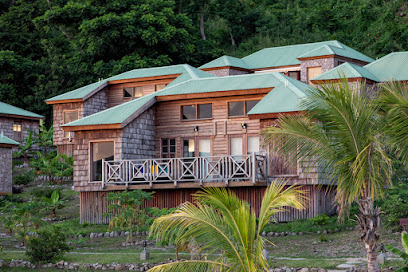
Perky's Pizza
Experience mouth-watering pizza made from fresh ingredients at Perky's Pizza in Roseau – where every slice tells a story.
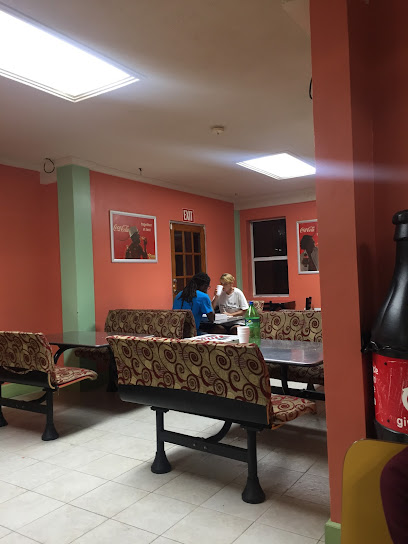
Chez Wen Cuisine
Experience fresh seafood with stunning ocean views at Chez Wen Cuisine in Scott's Head, Dominica – a must-visit culinary gem for every traveler.
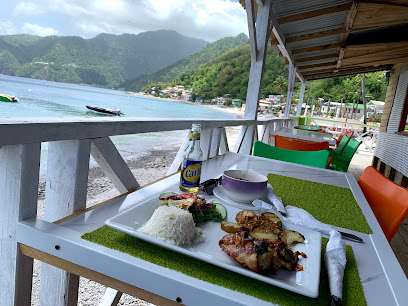
Lacou Melrose House
Discover authentic Dominican cuisine at Lacou Melrose House - where every dish is crafted with passion and local flair.
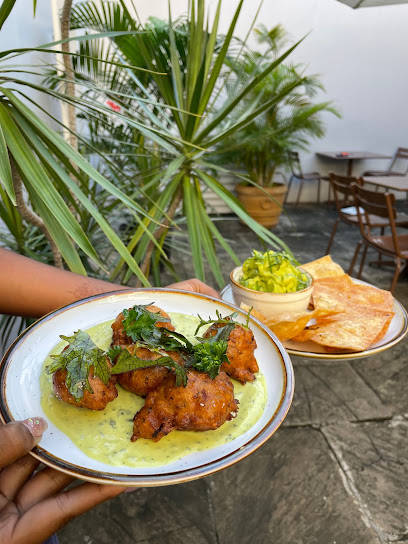
Petit Paris Restaurant & Bar
Experience exquisite French-inspired cuisine at Petit Paris Restaurant & Bar in Roseau – where local flavors meet culinary artistry.

Escape Bar & Grill
Experience delightful Caribbean flavors at Escape Bar & Grill - where vibrant culture meets delicious cuisine in Roseau.
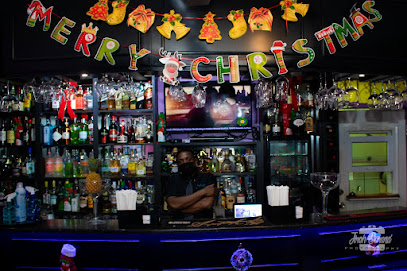
Old Stone Grill And Bar
Experience authentic Caribbean flavors at Old Stone Grill and Bar in Roseau - where every meal tells a story.
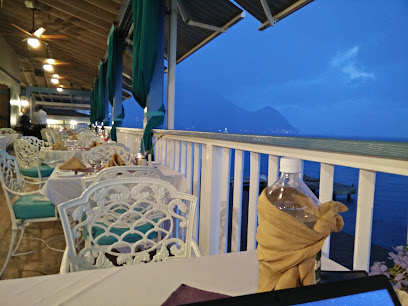
The Great Old House
Discover the culinary delights of The Great Old House in Roseau, where traditional Caribbean flavors meet warm hospitality.
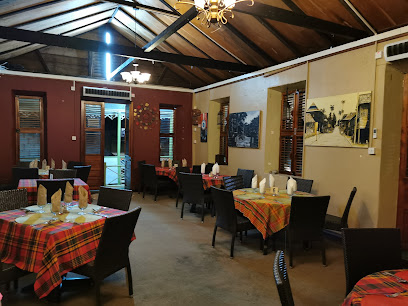
Zeb Zepis Bistro
Experience exquisite French cuisine at Zeb Zepis Bistro near Emerald Pool in Dominica—where nature meets culinary excellence.
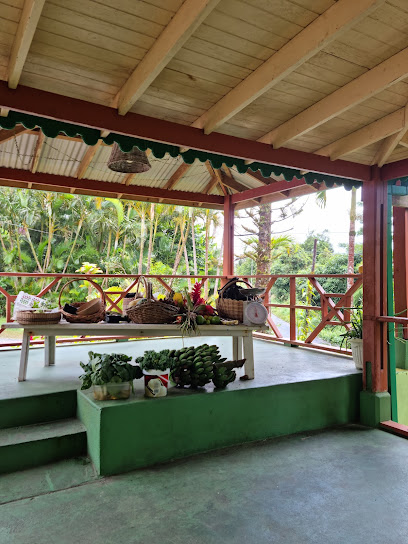
Standardz Restaurant & Bar
Experience the best fish and chips at Standardz Restaurant & Bar in Newtown – where fresh flavors meet casual dining.
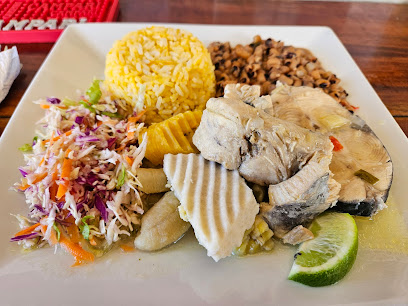
Starline Ital Kitchen
Discover authentic Caribbean cuisine at Starline Ital Kitchen in Roseau – where every dish tells a story of local flavors.
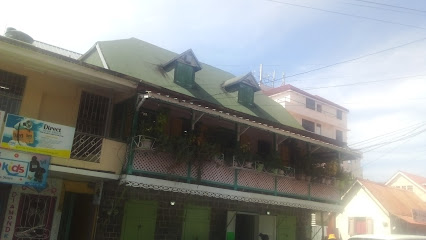
Pearl's Cuisine
Discover authentic Dominican flavors at Pearl's Cuisine in Roseau - where every dish tells a story.
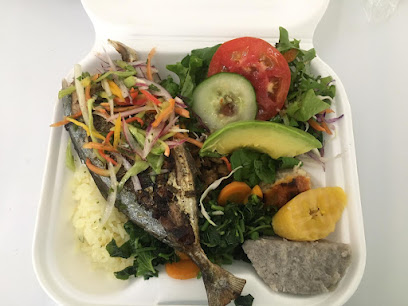
Pops Rotisserie & Grill
Experience authentic Caribbean flavors at Pops Rotisserie & Grill in Roseau - a culinary haven for food lovers seeking local delicacies.
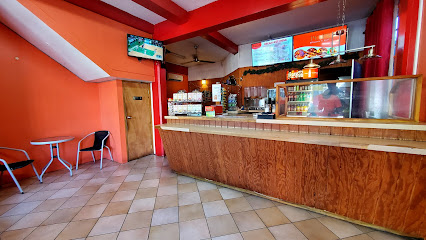
V Lounge & Grill
Discover exquisite dining at V Lounge & Grill in Roseau—where local flavors meet international cuisine in an inviting atmosphere.
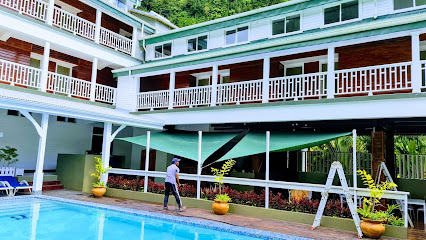
Obsessions Restaurant & Bar
Discover the vibrant flavors and scenic views at Obsessions Restaurant & Bar in Roseau - a culinary gem by the river.
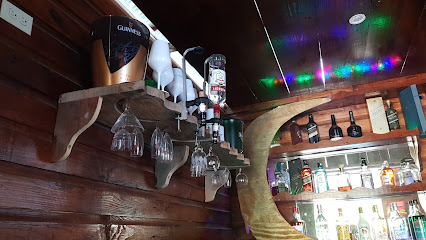
Markets, malls and hidden boutiques
Nature Island Dive
Experience the vibrant underwater world of Dominica with Nature Island Dive, your premier dive shop in Soufriere, offering exceptional diving adventures.
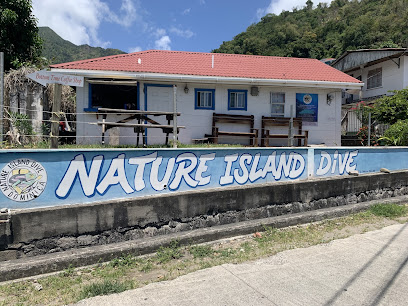
Save-A-Lot
Explore Save-A-Lot in Roseau for a budget-friendly shopping experience, offering fresh groceries and local products at unbeatable prices.

Green's Supermarket
Discover the flavors of the Dominican Republic at Green's Supermarket, your go-to shopping destination for fresh produce and local goods.
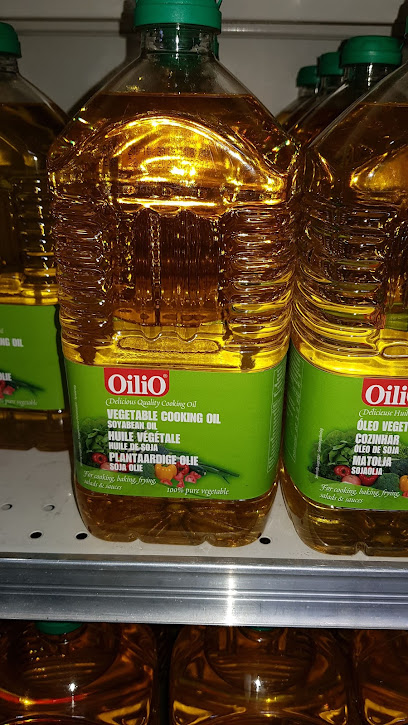
Bottom Time Coffee Shop
Discover the taste of the Caribbean at Bottom Time Coffee Shop, where local coffee meets stunning bayfront views in Soufriere.
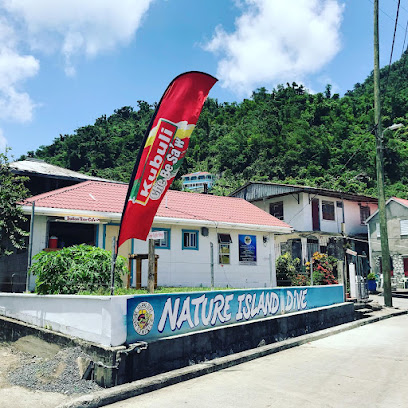
Duty Free Emporium
Experience the best of duty-free shopping at Duty Free Emporium in Roseau, where luxury meets local charm in an unforgettable retail experience.
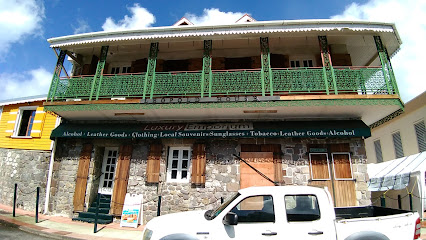
Outdoor world
Discover Outdoor World in Roseau, Dominica – your ultimate destination for sporting goods and outdoor adventure gear.
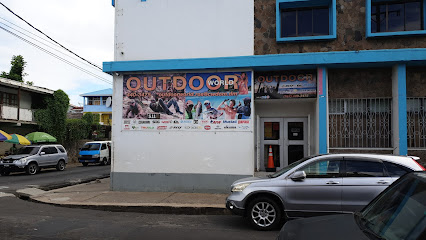
Viewside Grocery Store (Resturant/bar)
Experience local flavors and community spirit at Viewside Grocery Store, a vibrant supermarket in Upper Kings Hill offering fresh produce and regional delicacies.

Sugar Bliss
Discover the sweet haven of Sugar Bliss in Roseau, where artisanal cakes and pastries await to tantalize your taste buds.

FashionLine Store
Discover stylish footwear and exceptional service at FashionLine Store in Roseau, where local flair meets quality shopping.
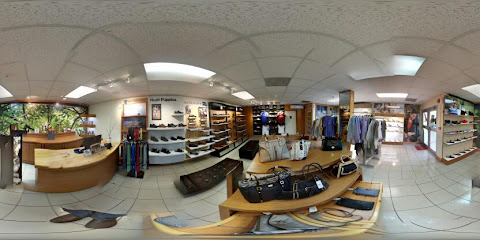
Levis Store/Limer's Jeans Inc
Explore the latest fashion trends at Levis Store/Limer's Jeans Inc in Roseau, a must-visit clothing store for tourists seeking quality and style.

Andys Super Market
Discover quality local products and a friendly atmosphere at Andy's Super Market, your top shopping destination in Soufriere, Dominica.

Fetish Fashion
Discover unique fashion at Fetish Fashion in Roseau, a vibrant clothing store offering a mix of local styles and great prices.

Leli's Convenience Shop
Experience the charm of Berekua at Leli's Convenience Shop, your go-to spot for local flavors and essential groceries.
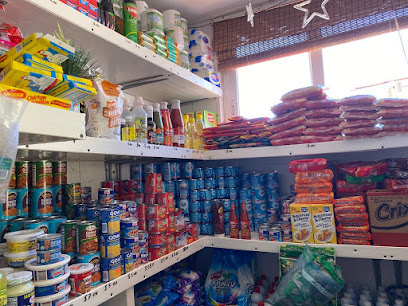
A & W Supermarket
Discover the local flavors of Dominica at A & W Supermarket in Soufriere, where fresh produce and unique island treats await every visitor.

Jolly's Toy Store and Fabric
Explore Jolly's Toy Store and Fabric in Roseau, Dominica, where imagination meets creativity with a delightful selection of toys and craft supplies.

Essential bars & hidden hideouts
Ruins Rock Café
Experience the vibrant atmosphere of Ruins Rock Café in Roseau, where local flavors and Caribbean culture come together in a delightful bar and café setting.
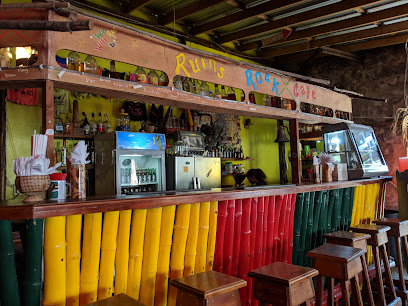
Teacher's Place
Experience authentic Caribbean flavors at Teacher's Place in Soufriere, where local ingredients meet traditional recipes for a memorable dining experience.
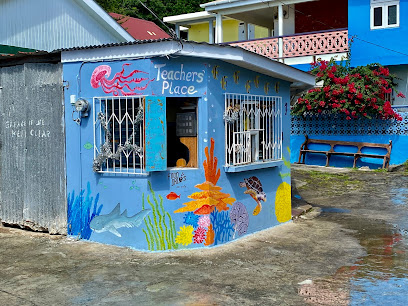
Milly's Bar
Discover Milly's Bar in Pointe Michel, where fried chicken meets Caribbean charm in a cozy, welcoming atmosphere.
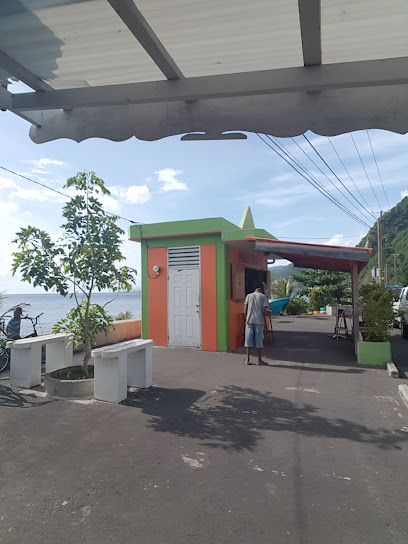
Iron Monkey Bar
Discover the vibrant Iron Monkey Bar in Soufriere, where stunning views, delicious drinks, and a lively atmosphere await you.
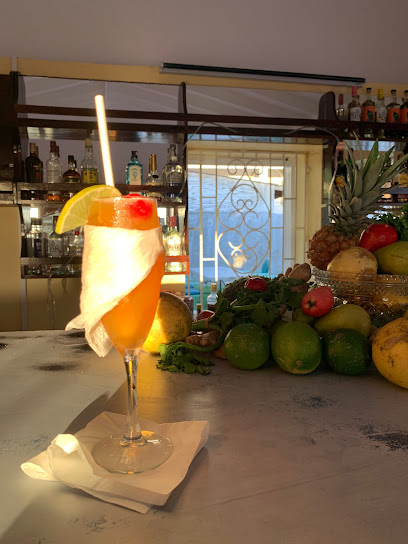
Marlo's Bar
Experience the local culture and vibrant nightlife at Marlo's Bar in Scott's Head, where stunning views and live music create unforgettable memories.
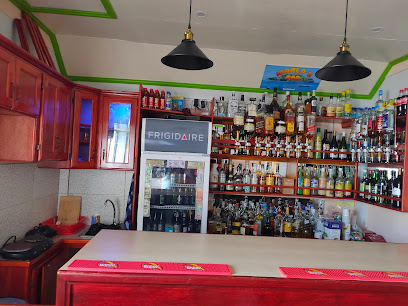
Nee's-Dy's Seaside Bar
Experience the perfect blend of Caribbean flavors and ocean views at Nee's-Dy's Seaside Bar in Soufriere, an unforgettable dining destination.

Hazels's Touch
Experience the vibrant flavors of Caribbean cuisine at Hazel's Touch, a must-visit restaurant in Soufriere offering fresh, local ingredients.
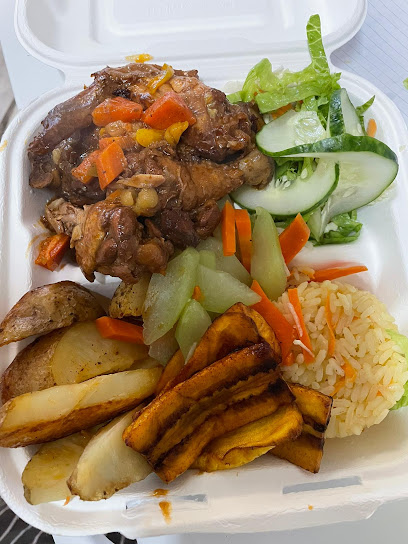
Iron Monkey Bar & Grill
Experience the vibrant flavors and lively atmosphere at Iron Monkey Bar & Grill in Soufriere, a tropical escape for food and cocktail enthusiasts.

Bobby Bar & Grill
Savor the authentic Caribbean taste at Bobby Bar & Grill, where vibrant flavors and a lively atmosphere await in Soufriere.
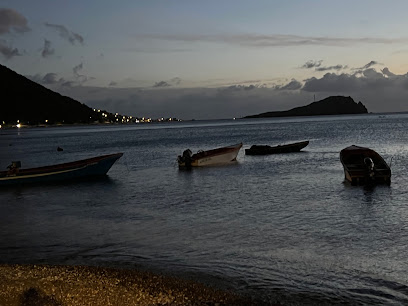
Weefy's bar
Discover the vibrant atmosphere and local flavors at Weefy's Bar in Soufriere, the perfect spot for relaxation and cultural immersion.

Snack Bar
Experience the vibrant flavors of the Caribbean at Snack Bar, a must-visit restaurant in Soufriere known for its fresh local cuisine and welcoming atmosphere.
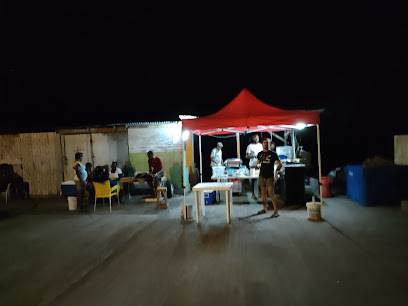
Bliss_Chill_Spot_Bar
Unwind at Bliss Chill Spot Bar in Soufriere, where good music, delicious cocktails, and stunning views create the perfect tropical getaway.
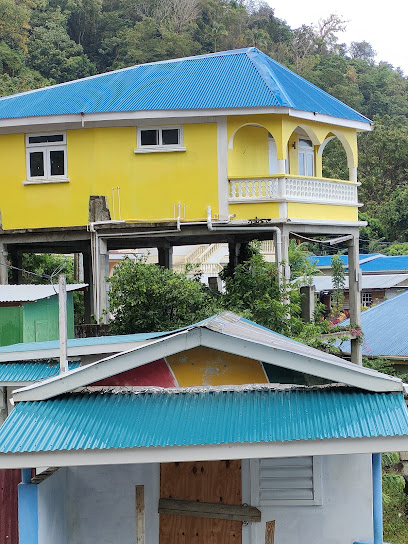
Hideout bar
Experience the vibrant nightlife and local flavors at Hideout Bar in Soufriere, a must-visit spot for every traveler.

Jacks bar and grill
Discover the vibrant ambiance and delicious local cuisine at Jacks Bar and Grill in Soufrière, your go-to spot for relaxation and fun.

The Throne
Experience the tranquility and stunning views at The Throne, Soufriere's premier bar for relaxation and local flavors.

Local Phrases
-
- HelloBonjou
[bon-joo] - GoodbyeOrevwa
[oh-rev-wah] - YesWi
[wee] - NoNon
[non] - Please/You're welcomeTanpri
[tan-pree] - Thank youMèsi
[may-see] - Excuse me/SorryEskize mwen
[es-kee-zay mwen] - How are you?Kijan ou ye?
[kee-zhan oo yay] - Fine. And you?Byen. E ou?
[bee-yen. ay oo] - Do you speak English?Eske ou pale angle?
[es-kay oo pah-lay ang-lay] - I don't understandMwen pa konprann
[mwen pa kon-pran]
- HelloBonjou
-
- I'd like to see the menu, pleaseMwen ta renmen wè meni an, tanpri
[mwen tah ren-men way meh-nee ahn, tan-pree] - I don't eat meatMwen pa manje vyann
[mwen pa manj vyan] - Cheers!Santé!
[san-tay] - I would like to pay, pleaseMwen ta renmen peye, tanpri
[mwen tah ren-men pay-yay, tan-pree]
- I'd like to see the menu, pleaseMwen ta renmen wè meni an, tanpri
-
- Help!Ed!
[ed] - Go away!Ale!
[ah-lay] - Call the Police!Rele Polis la!
[reh-lay poh-lees lah] - Call a doctor!Rele yon doktè!
[reh-lay yohn dohk-tay] - I'm lostMwen pedi
[mwen peh-dee] - I'm illMwen malad
[mwen mah-lahd]
- Help!Ed!
-
- I'd like to buy...Mwen ta renmen achte...
[mwen tah ren-men ash-tay] - I'm just lookingMwen jis gade
[mwen zhee gah-day] - How much is it?Konbyen sa koute?
[kon-byen sah koot] - That's too expensiveSa twò chè
[sah twah sheh] - Can you lower the price?Ou ka bese pri a?
[oo ka behs pray ah]
- I'd like to buy...Mwen ta renmen achte...
-
- What time is it?Ki lè li ye?
[kee lay lee yay] - It's one o'clockLi senkè
[lee san-kay] - Half past (10)Demi (diz)
[deh-mee (dee)] - MorningMaten
[mah-ten] - AfternoonApremidi
[ah-pray-mee-dee] - EveningAswè
[ah-sway] - YesterdayYè
[yay] - TodayJodi a
[zho-dee ah] - TomorrowDemen
[deh-men] - 11
[1] - 22
[2] - 33
[3] - 44
[4] - 55
[5] - 66
[6] - 77
[7] - 88
[8] - 99
[9] - 1010
[10]
- What time is it?Ki lè li ye?
-
- Where's a/the...?Ki kote...?
[kee koh-tay] - What's the address?Kisa adres la?
[kee-sah ad-res lah] - Can you show me (on the map)?Ou ka montre mwen (sou kat)?
[oo ka mohn-tray mwen (soo kaht)] - When's the next (bus)?Ki lè pròchenn lan pase?
[kee lay proh-shen lahn pah-say] - A ticket (to ....)Yon tikè (pou ....)
[yohn tee-kay (poo)]
- Where's a/the...?Ki kote...?
History of Soufrière
-
Long before European settlers arrived, the area of Soufrière was inhabited by the Kalinago people. They called the island 'Waitukubuli,' meaning 'Tall is her body,' and lived in harmony with the lush environment, relying on fishing, hunting, and agriculture for sustenance.
-
During the late 15th and early 16th centuries, European explorers, including Christopher Columbus in his second voyage in 1493, arrived in the Caribbean. The Spanish initially claimed Dominica, but their attempts to colonize were met with resistance from the Kalinago warriors.
-
In the 17th century, the French began to settle in Dominica. The village of Soufrière, named after the French word for 'sulfur,' references the sulfur springs found in the area. These natural hot springs became a focal point for relaxation and medicinal purposes.
-
Dominica changed hands between the French and British several times throughout the 18th century. The Treaty of Paris in 1763 saw the island ceded to the British, but the French recaptured it briefly during the American Revolutionary War. It was finally restored to the British by the Treaty of Versailles in 1783.
-
The sulfur springs in Soufrière have been historically significant for their purported healing properties. Throughout the 18th and 19th centuries, these springs attracted visitors seeking relief from various ailments. Today, they remain a popular attraction for both locals and tourists.
-
During the colonial era, Soufrière, like much of Dominica, was heavily involved in the plantation economy, relying on enslaved Africans for labor. The production of coffee, cocoa, and sugar was central to the local economy until the abolition of slavery in 1834.
-
Following the abolition of slavery, freed Africans, along with indentured laborers from India, contributed to the rich cultural tapestry of Soufrière. This cultural fusion is evident in the area's music, dance, cuisine, and religious practices.
-
Soufrière, like much of Dominica, has been affected by natural disasters, including hurricanes and volcanic activity. Notably, the eruption of the Soufrière Hills volcano in Montserrat in 1995 sent ash clouds drifting to Dominica. The community has shown remarkable resilience in rebuilding and preserving their town.
-
Today, Soufrière is a vibrant community that blends its historical roots with the stunning natural beauty of the surrounding area. The village is a gateway to the Soufrière-Scotts Head Marine Reserve, which offers some of the best snorkeling and diving in the Caribbean, and showcases the harmony between history, culture, and nature.
Soufrière Essentials
-
Soufrière is located in the southwestern part of Dominica. The closest international airport is Douglas-Charles Airport (DOM), approximately 1.5 hours away by car. From the airport, you can take a taxi or rent a car to reach Soufrière. Another option is to fly into Canefield Airport (DCF), which is closer but has limited flight options. Regular ferries are also available from neighboring islands like Guadeloupe and Martinique.
-
Within Soufrière, the primary mode of transportation is by car or taxi. Renting a car can be convenient for exploring the area and its surroundings. Local buses, known as 'minibuses,' operate on specific routes but may not be as reliable. Taxis are readily available and are a good option for short trips. Walking is also feasible for short distances within the town.
-
The official currency in Dominica is the Eastern Caribbean Dollar (XCD). Credit cards are widely accepted in hotels, restaurants, and larger shops, but it is advisable to carry some cash, especially for smaller purchases or in more remote areas. ATMs are available, but it's wise to withdraw sufficient cash in larger towns like Roseau before heading to Soufrière.
-
Soufrière is generally safe for tourists, but it's always wise to take standard precautions. Avoid walking alone at night in unfamiliar areas and keep an eye on your belongings in crowded places. While Soufrière itself has a low crime rate, some areas in the capital, Roseau, have higher instances of petty crime targeting tourists. Always stay vigilant and aware of your surroundings.
-
In case of emergency, dial 999 for immediate assistance. There are local police and medical facilities available in Soufrière. It is recommended to have travel insurance that covers medical emergencies. For minor health issues, there are pharmacies in the area where you can purchase over-the-counter medications. The main hospital is in Roseau, which is about a 30-minute drive away.
-
Fashion: Do dress modestly, especially when visiting religious sites. Avoid wearing revealing clothing. Religion: Do respect local customs and traditions, particularly in religious settings. Public Transport: Do be respectful and give up your seat to elderly passengers. Don't eat or drink on public transport. Greetings: Do greet people with a smile and a friendly 'hello.' Handshakes are also common. Eating & Drinking: Do try local delicacies and accept food offerings graciously. Don't refuse hospitality, as it is considered impolite.
-
To experience Soufrière like a local, visit the Soufrière Sulphur Springs, which is a unique geothermal area. Engage with locals, especially during community events and festivals. Don't miss the opportunity to dive or snorkel at Champagne Reef, known for its underwater volcanic vents. For a unique culinary experience, try the local Creole cuisine and fresh seafood at small, family-run restaurants.
Trending Landmark in Soufrière
-
Trafalgar Falls
-
Jungle Bay Dominica
-
Ti Kwen Glo Cho
-
Champagne Reef, Dominica
-
Cabrits National Park
-
Chez Wen Cuisine
-
Fort Shirley
-
Kalinago Barana Aute
-
Lacou Melrose House
-
Morne Trois Pitons National Park
-
Extreme Dominica - Canyon Experience
-
Bubble Beach Spa
-
Ruins Rock Café
-
Nature Island Dive
-
Papillote Tropical Gardens
Nearby Cities to Soufrière
-
Things To Do in Malgretoute
-
Things To Do in Canaries
-
Things To Do in Choiseul
-
Things To Do in Anse la Raye
-
Things To Do in Marigot Bay
-
Things To Do in Laborie
-
Things To Do in Praslin
-
Things To Do in Micoud
-
Things To Do in Castries
-
Things To Do in Vieux Fort
-
Things To Do in Dauphin
-
Things To Do in Rodney Bay
-
Things To Do in Gros Islet
-
Things To Do in Georgetown
-
Things To Do in Chateaubelair








